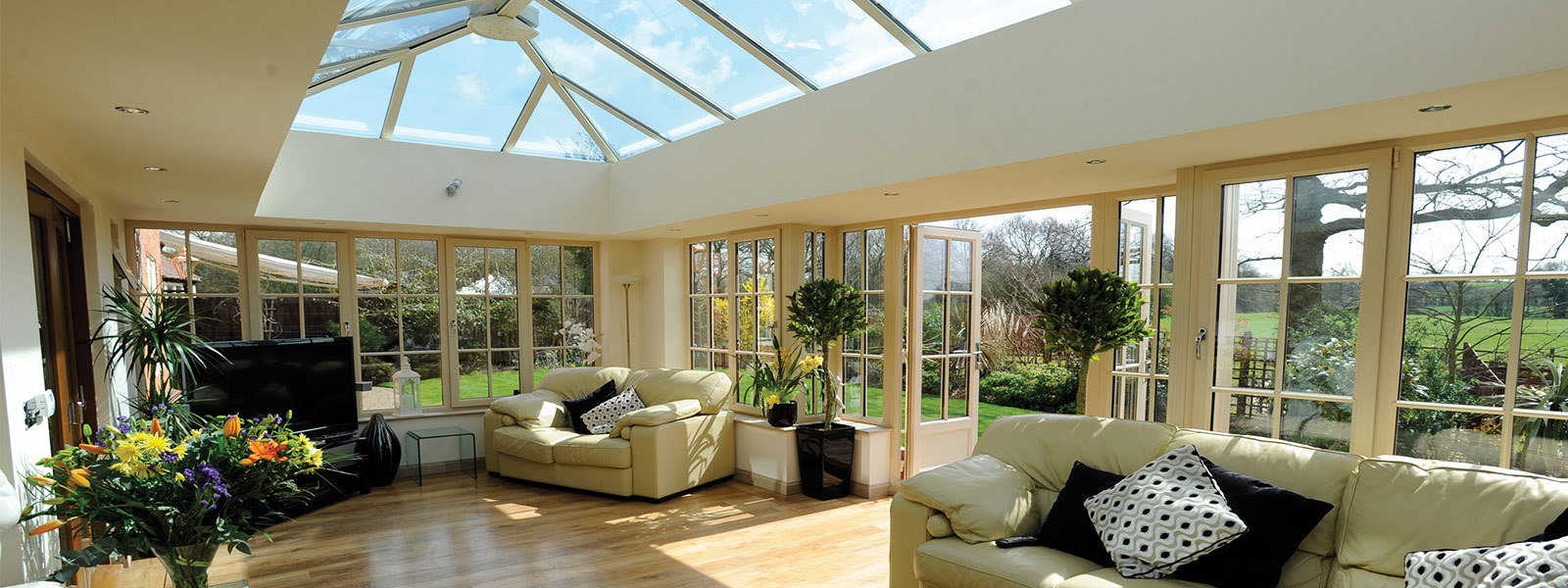Care and Maintenance Policy

Please read carefully, as failure to maintain your products in a reasonable manner could invalidate your Guarantee as referred to in the Terms & Conditions of the guarantee.
Here are a few do’s and don’ts to help maintain your new installation. Please note that using incorrect cleaning products such as bleach and solvents or using high-pressure or steam cleaners are not listed below and, therefore, would void the warranty.
Installations in exposed areas and coastal areas with harsh climates will require maintenance to be carried out more frequently.
Glass Cleaning
Float glass, used in most double-glazed units, is easily scratched and therefore it is recommended that hand Jewellery is removed prior to cleaning.
Any proprietary household glass cleaner may be used with a soft cloth and it is recommended that heavy external grime be initially removed with a solution of soap and water.
- Laminated Glass – or glass containing Georgian bars, is cleaned in exactly the same manner.
- Scratched Glass – Scratches can be removed with jeweller’s rouge, or equivalent rubbing compound.
- Grease Marks – Greasy finger marks, splashes, or traffic haze can easily be removed if you add a dash of ordinary vinegar or methylated spirits to your cleaning water or use a proprietary glass cleaner.
- Paint Splashes – Use a sharp knife or razor blade to gently lift the paint without scratching the glass.
Lead Glass Cleaning
In this type of double glazing, lead strips are bonded to the inside of the units in diamond or square Patterns.
Note external lead will oxidise. This is a natural phenomenon and cannot be avoided. Take care when cleaning leaded lights as excessive pressure might dislodge the lead from the glass surface. The use of warm soapy water and a soft cloth, moderately applied, will prove an adequate cleaning method.
Keep Your Frames Clean
Routine cleaning – Just wash down using clean lukewarm water about once a month depending on the degree of exposure to soling. Soiling & stubborn stains – Mix a mild detergent liquid with clean lukewarm water. The more stubborn the stain the more detergent you should use. Polishing – An anti-static furniture polish can be used to give your frames an extra shine but do not use a solvent or ammonia-based cleaner.
Sticking weather strips – If the weather sealing seems to stick slightly to the frame when you open the window, dust it lightly with talcum powder to solve the problem without affecting the seal.
Take care not to disturb sealants and gaskets. Should gaskets fitted to your frames become dislodged from the grooves, slide back into position immediately to avoid damage when the unit or door is closed.
Some discolouration of mastic seal is a natural occurrence and cannot be avoided. (see also Condensation below.)
Locks, Hinges, and Handles
It is recommended that these are maintained about every 6 months as they have finely tuned intricate internal moving parts that can be damaged if not maintained correctly.
Lubricate with a silicone-based lubricant on all moving parts to ensure smooth operation IN ADDITION use graphite powder in the key barrell. Do NOT use WD40 as this dries up any existing lubricant.
We recommend that any additional keys required are purchased through a Locksmith, not a standard key-cutting service due to the highly technical internal workings of the barrel/cylinder.
Some suppliers issue Key Cards advising that the locks should be registered with them and the card states the code required for additional key cutting.
All doors can experience Thermal Movement, especially in the first six months after installation. The suppliers suggest that the handles should ALWAYS be thrown (ie: the handle should always be pushed up to engage ALL the locking points as this helps to prevent any bowing from thermal movement.
Never use abrasive cleaning agents. Warm soapy water and a soft cloth are sufficient. It is important that abrasive agents are not used on this finish.
Care should be taken when wearing hand jewellery as it can cause damage to hardware.
Where installed brass/chrome is fully protected with lacquer, however, over time and through normal wear and tear this lacquer may peel or become tarnished. As this is a natural occurrence, you can remove the old lacquer with nail polish or a paint stripper. (Ensure that you mask the surrounding areas to prevent damage). Clean and polish with a proprietary brass polish and then carefully re-lacquer with a good quality product.
Tea staining can be a common occurrence on Stainless Steel if contaminates are allowed to build up on the surface, so regular cleaning is necessary to prevent this.
Patio Doors
To stop children (or absent-minded adults) from forgetting that the door is there, put a small sticker in the middle of the glass.
Drainage
Drainage slots are in every window or door we install. These slots allow any water ingress to flow outside. To ensure an efficient system these slots must remain unblocked. Periodically remove dirt, clear drain holes and check the drainage operation by flushing with water.
Condensation
Condensation, which is water vapour in the atmosphere turning into moisture is something that can never be eliminated entirely. The only way to do this would be to stop cooking, washing or even breathing indoors. All of these activities produce water vapour.
Due to the efficiency of the new windows/doors/roof preventing heat loss the surrounding areas become the coldest spots and therefore can be subject to condensation forming and black mold occurring. Regular cleaning of these areas is required.
Condensation Tips
Condensation can, however, be controlled. In addition to your new window and door, the main weapons which you have to hand are ventilation and heating. (Remember that double glazing prevents heat loss, it does not produce heat). Trial and error will soon tell you which combination of heating/ventilation is best for your circumstances, but we can provide assistance if requested.
Change the air in a room daily by opening a window for a short time. Keep bathroom and kitchen doors closed when you are washing or cooking and open a window. In cold weather keep some form of heating on in the house/conservatory permanently
The Glass & Glazing Federation’s (GGF) Visual Quality Standard For Glass
A totally flawless piece of glass is very rare. If you look enough at any piece of glass, you will almost certainly find a minor blemish.
The question that has to be answered is, is the flaw or mark of such a nature that it spoils the appearance of the window?
In an attempt to help resolve what can be a contentious issue, the Glass and Glazing Federation has devised the following test to enable both customers and glazing companies to examine glass against an objective standard.
Test: Stand 3 metres back from the glass inside the house. You must ensure that the test is carried out in daylight and not in direct sunlight. The area which you are checking is the whole window with the exception of a 50mm wide band around the edge.
The glass is considered to be acceptable if the following are not obvious nor bunched together:
- Totally enclosed seeds, bubbles or blisters, hairlines or blobs, fine scratches.
- Not more than 25mm long and minute embedded particles.
Note: These guidelines do not apply to patterned glass, as due to the way it is made, flaws such as seeds and bubbles are considered to be acceptable. We can provide a copy of the GGF leaflet if required.
Conservatories & Conservatory Roof Cleaning
Wash roof panels with soap and water solution, every four months, to remove grime and atmospheric deposits.
Note: Avoid all solvent-based or abrasive cleaners.
Gutters and Box Gutters
Unlike the guttering on your house, which is often laid to falls, on a conservatory it is laid level. This is perfectly acceptable, all in accordance with BS 63 67:1983 code of practice for Drainage of roofs. Occasionally, therefore, you will notice standing water in your gutter system. it is important that all gutters and their respective outlets are regularly cleaned. In line with published Health and Safety Regulations, always use crawl boards when working on the roof of the conservatory.
Where a box gutter is installed against the eaves of an existing roof (ie: on a bungalow), the condition of the existing roof should be checked and also maintained regularly to ensure damage or issues with the existing roof does not create issues that could impact and /or affect the installation carried out by Eliments.
Water is notorious for traveling from the ingress point to a different area before it escapes at the lowest point. For example, damaged ridge/roof tiles, and damaged felt, allows water to enter the roof space and collect in the eaves space, and then find its way into the conservatory.
Ensure ALL gutters are cleared of leaves, moss, and falling debris to avoid overflow of rainwater. The frequency of this will depend on the direction the roof faces (ie North), the condition of the mortar and the proximity to trees.
Please note that placing ladders against gutters can damage products, so extreme care should be taken to prevent accidental damage.
Polycarbonate / Ultralite Roofs
Both roof types have a breather tape that allows air to circulate and in some climate conditions condensation will form within the channels of the product.
Note: – DO NOT WALK ON CONSERVATORY ROOFS – ALWAYS USE CRAWL BOARDS TO SPREAD THE LOAD. DO NOT LEAN LADDERS AGAINST THE PVCU FRAMES OR GLASS.
Clean as shown in Frames.
Maintenance Guidelines for Roofline PVC Products
Eliments use low-maintenance external products from leading suppliers. To ensure they keep their lasting good looks whatever the weather, Eliments suggest the following simple cleaning procedure:
Cleaning
Cellular PVC products are self-finished and essentially maintenance-free. An occasional wash with a non-scratch, mild detergent, and eater is beneficial in removing surface grime and maintaining a pristine appearance, especially in heavily polluted atmospheres. As with other PVC-based materials, solvents should not be used. When cleaning, flood the surface to prevent ingraining of any dirt particles. Exercise care to prevent contact with, and staining by creosote or bitumen-based products. Other common building materials are easily cleaned off without Damage. Foiled surfaces should be cleaned regularly with a damp soft cloth. If necessary a mild detergent/soap in lukewarm water can be used.
Polish should be avoided, as should abrasive or organic solvent cleaners.
Repairs
Cellular products can be cut and drilled using normal woodworking tools if repairs are required.
Gutters
It is important that all gutters and their respective outlets are regularly cleaned out of debris to prevent overflow excess accumulation of water. Excessive weight of snow can also bring down guttering so attention should be paid and action taken to prevent the snow from causing any damage.
Notes
In the event that you have an issue with the products supplied for your installation, it is important that you advise when the issue occurs as continued use may incur more damage. However please note that if we arrange a service call and find that Care and Maintenance as described in the leaflet has not been followed, the service call and any parts required to correct the issue may be chargeable. Unfortunately, until the engineer attends the site we are unable to say if this applies.
